What is the Measurement of Resistance?
What is the Measurement of Resistance?
Resistance Definition
Resistance is the opposition to electric current flow, a fundamental concept in electrical engineering.
Measurement of Low Resistance (<1Ω)
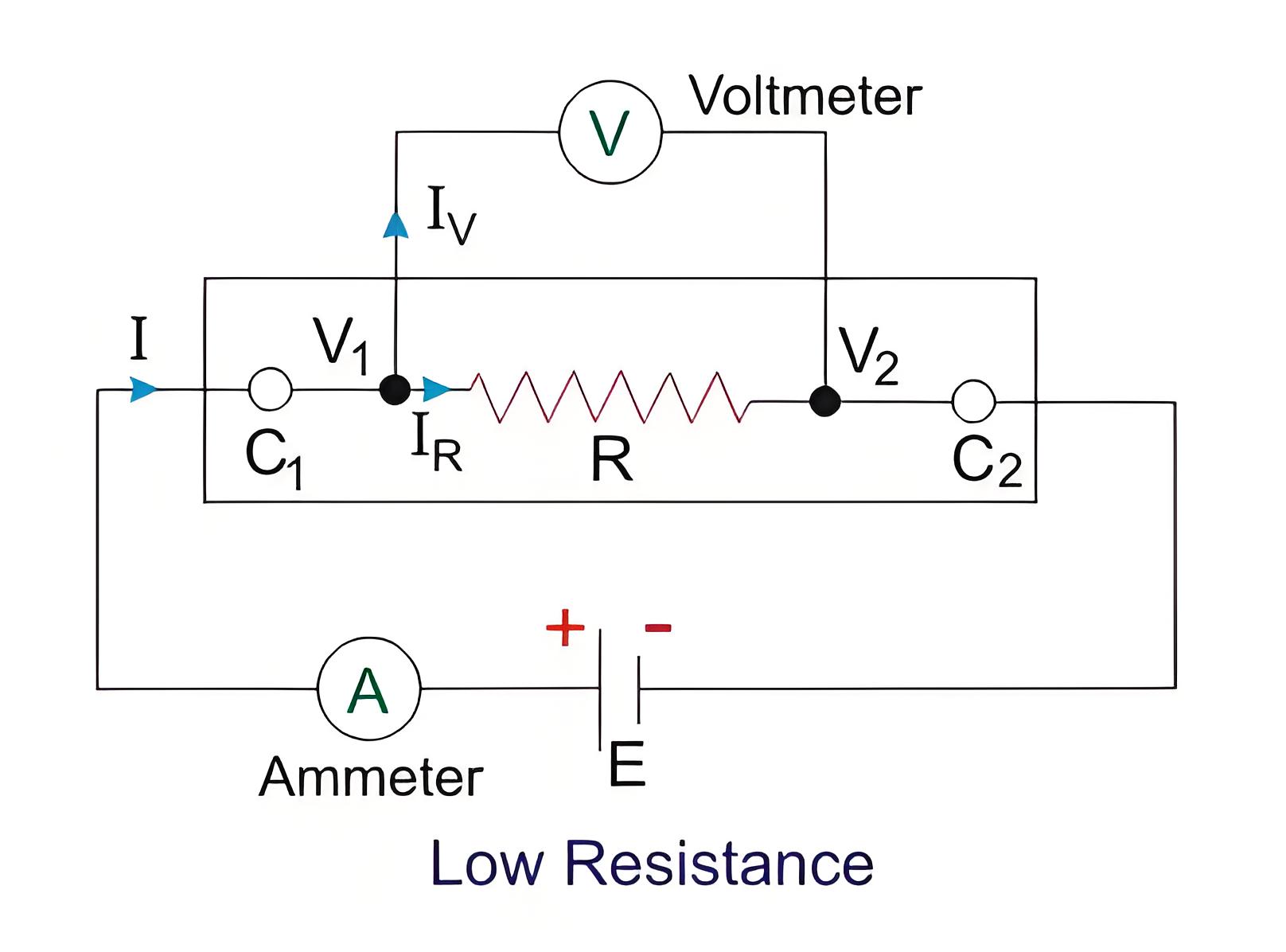
Kelvin’s Double Bridge
Kelvin’s double bridge is a modification of simple Wheatstone bridge. Figure below shows the circuit diagram of Kelvin’s double bridge.
As we can see in the above figure there are two sets of arms, one with resistances P and Q and other with resistances p and q. R is the unknown low resistance and S is a standard resistance. Here r represents the contact resistance between the unknown resistance and the standard resistance, whose effect we need to eliminate. For measurement we make the ratio P/Q equal to p/q and hence a balanced Wheatstone bridge is formed leading to null deflection in the galvanometer. Hence for a balanced bridge we can write
By substituting Equation 2 into Equation 1 and using the ratio P/Q = p/q, we derive the following result:
Hence we see that by using balanced double arms we can eliminate the contact resistance completely and hence error due to it. To eliminate another error caused due to thermo-electric emf, we take another reading with battery connection reversed and finally take average of the two readings. This bridge is useful for resistances in range of 0.1µΩ to 1.0 Ω.
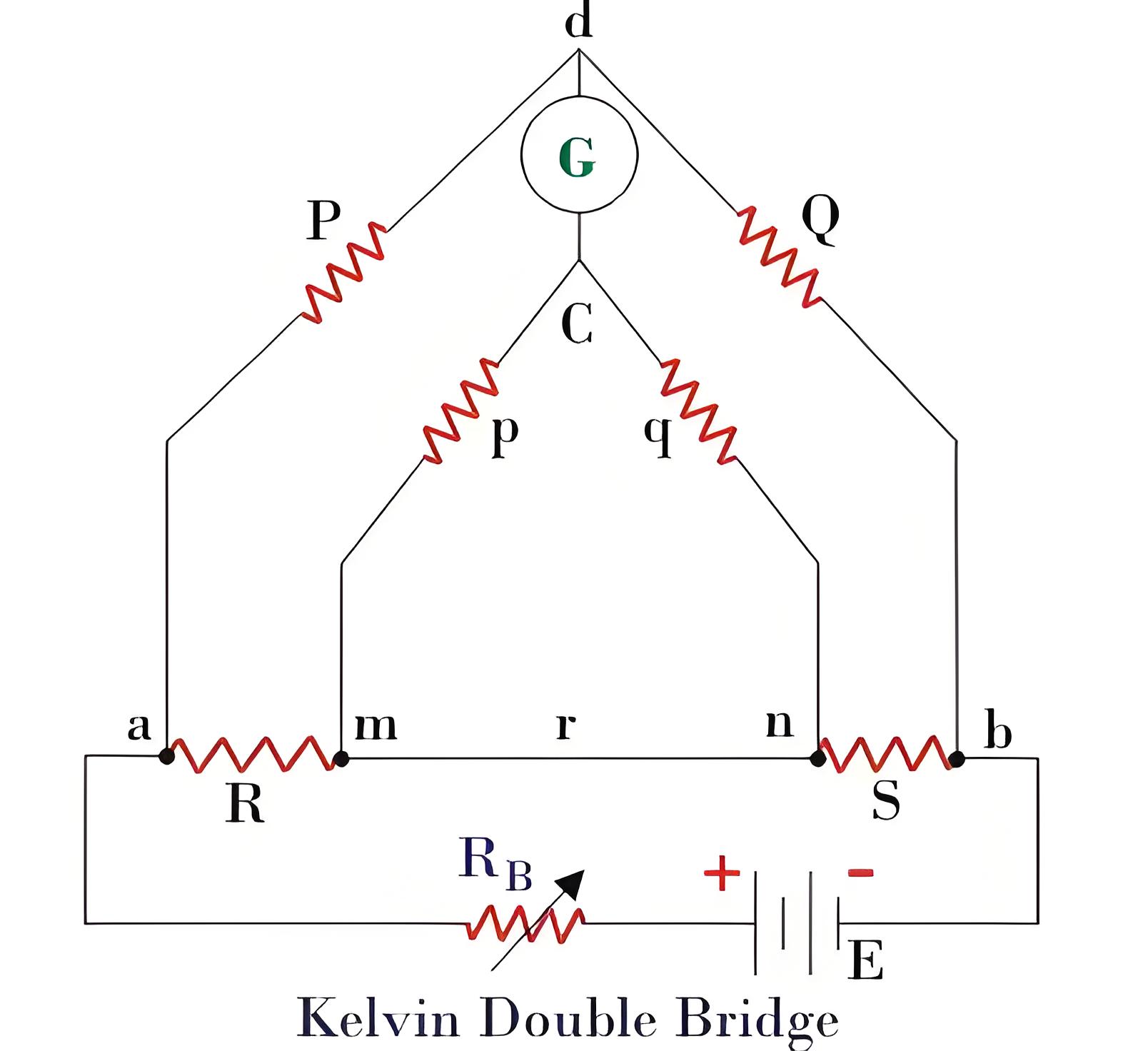
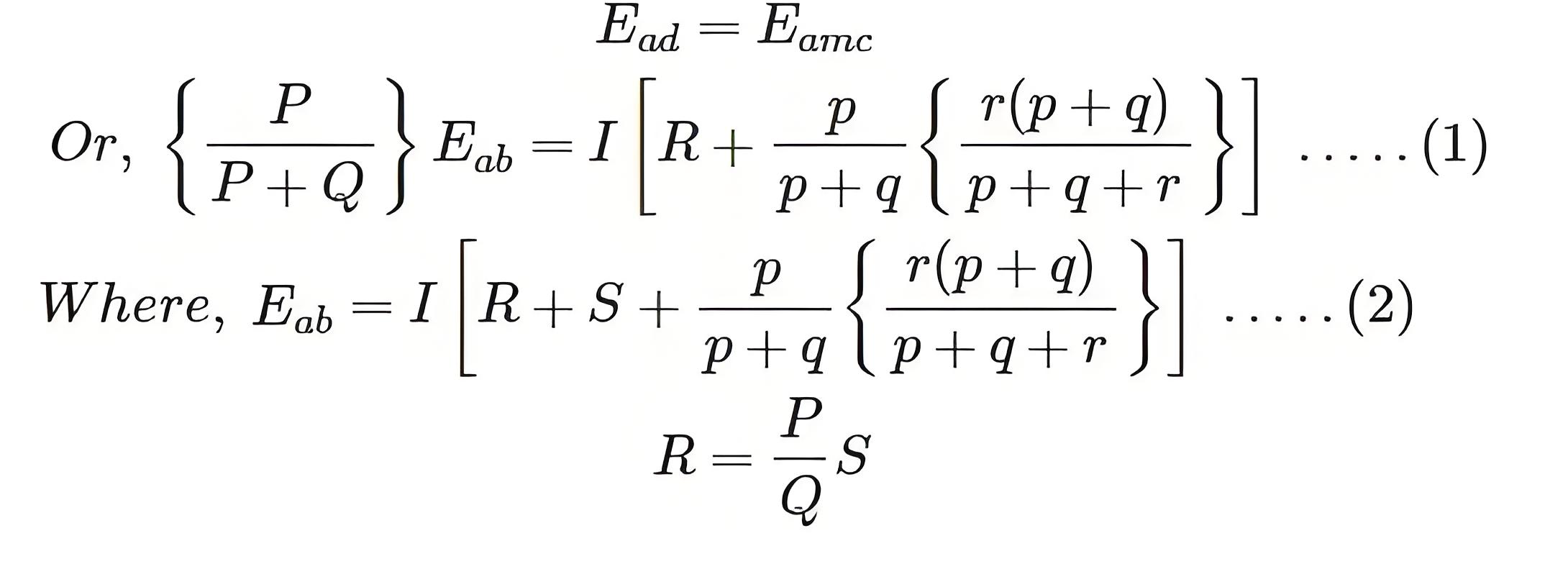
Ducter Ohmmeter
The Ducter Ohmmeter, an electromechanical instrument, measures low resistances. It includes a permanent magnet, similar to a PMMC instrument, and two coils positioned within the magnetic field and at right angles to each other, rotating freely about a common axis. The diagram below illustrates a Ducter Ohmmeter and the necessary connections to measure an unknown resistance R.
One of the coil called current coil, is connected to current terminals C 1 and C2,while the other coil called, voltage coil is connected to potential terminals V1 and V2. Voltage coil carries current proportional of the voltage drop across R and so is its torque produced. Current coil carries current proportional to the current flowing through R and so is its torque too. Both the torque acts in opposite direction and the indicator come to halt when the two are equal. This instrument is useful for resistance in range 100µΩ to 5Ω.
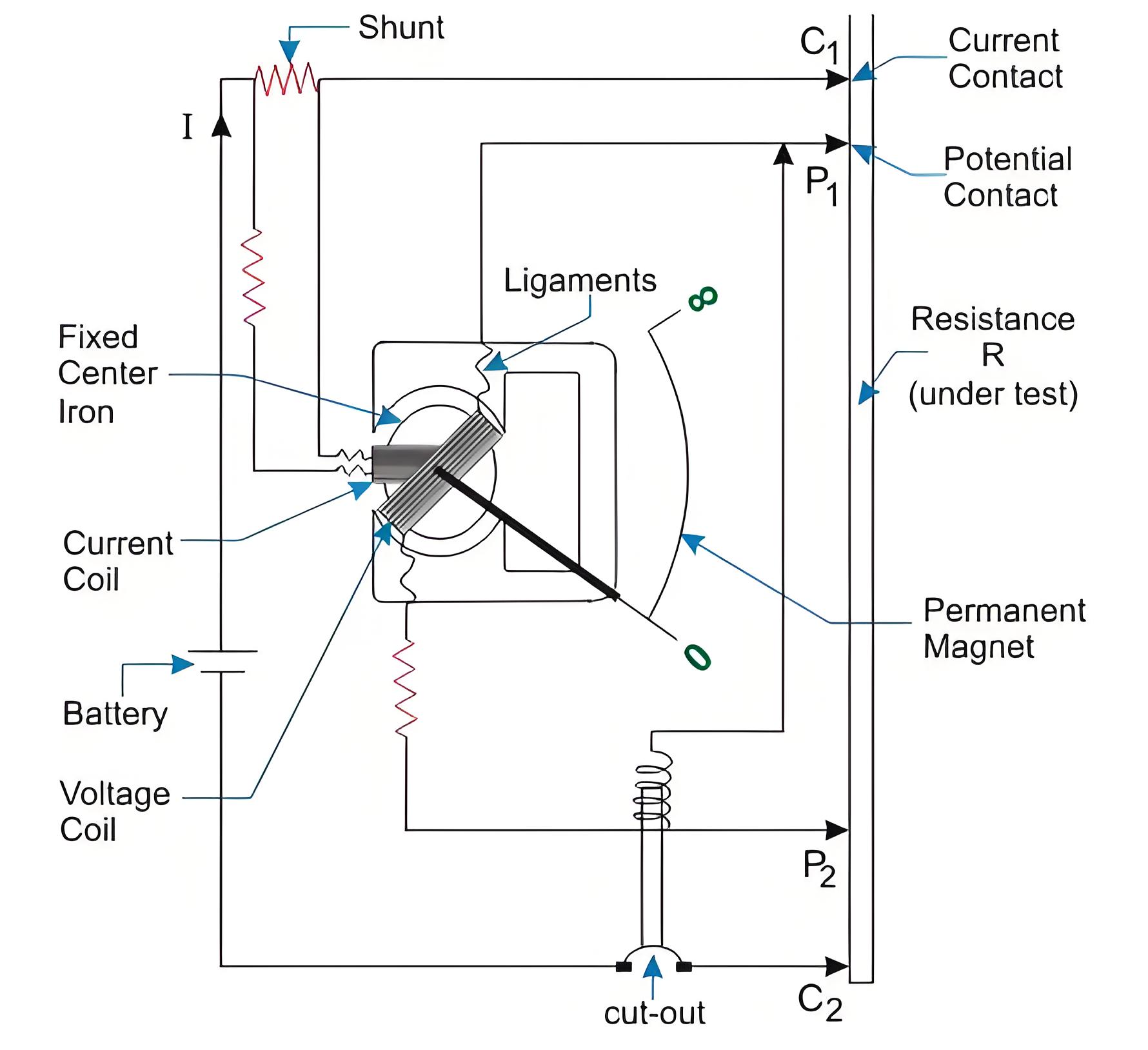
Measurement of Medium Resistance (1Ω – 100kΩ)
Ammeter Voltmeter Method
This is the most crude and simplest method of measuring resistance. It uses one ammeter to measure current, I and one voltmeter to measure voltage, V and we get the value of resistance as
Now we can have two possible connections of ammeter and voltmeter, shown in the figure below.Now in figure 1, the voltmeter measures voltage drop across ammeter and the unknown resistance, hence
Hence, the relative error will be,
For connection in figure 2, the ammeter measures the sum of current through voltmeter and resistance, hence
The relative error will be,
It can be observed that the relative error is zero for R a = 0 in first case and Rv = ∞ in second case. Now the questions stand that which connection to be used in which case. To find out this we equate both the errors
Hence for resistances greater than that given by above equation we use the first method and for less than that we use second method.
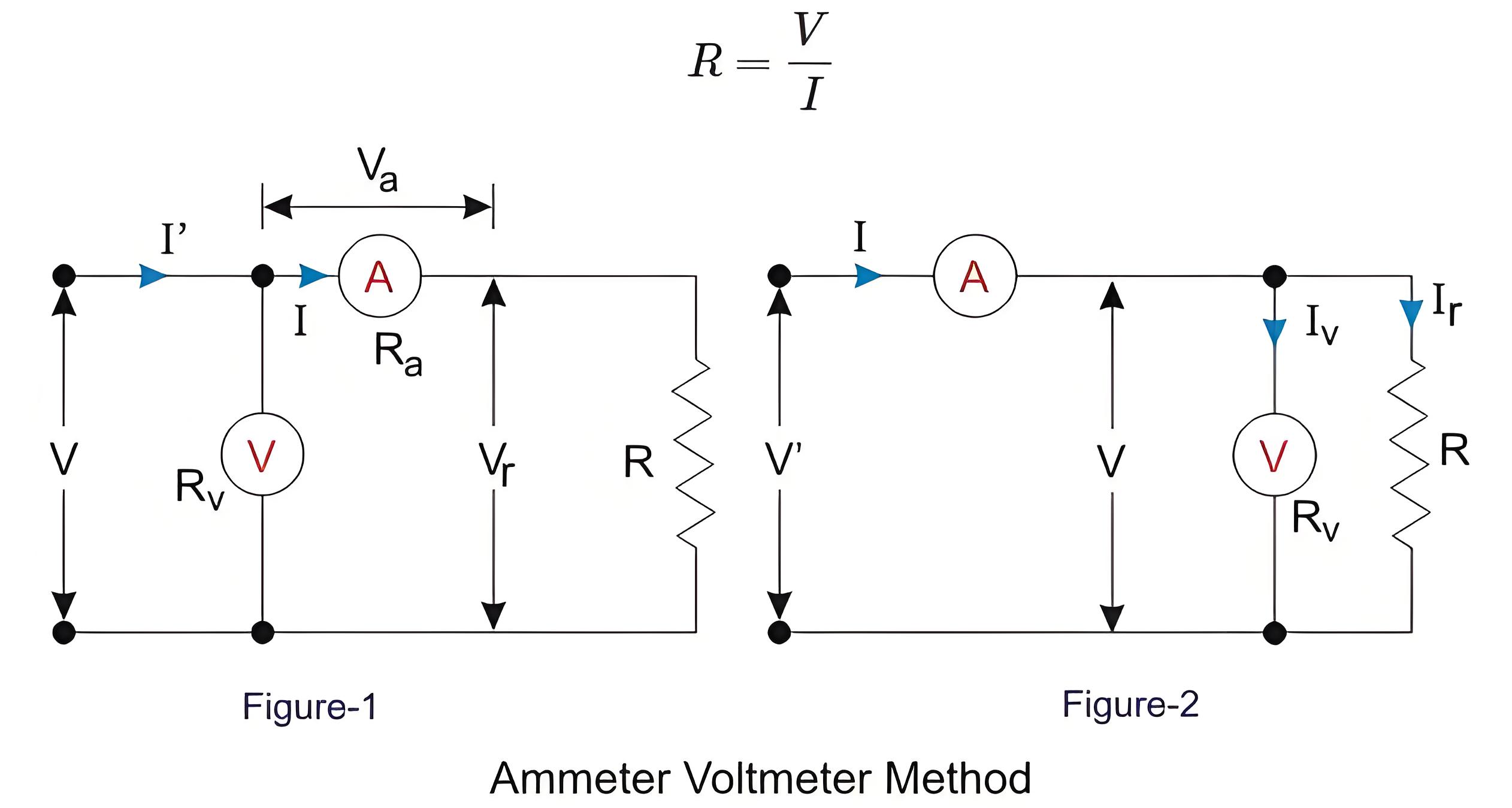
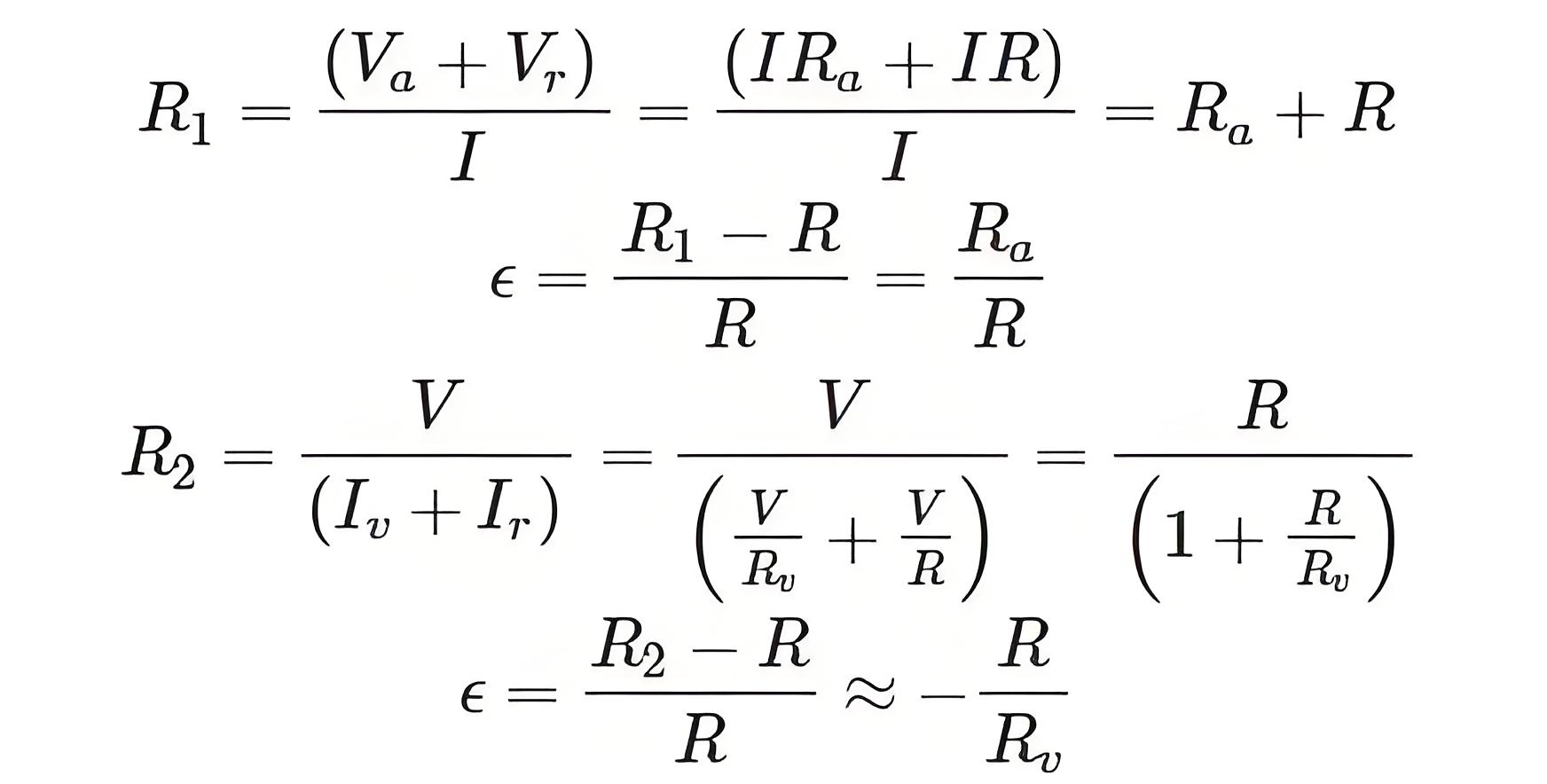
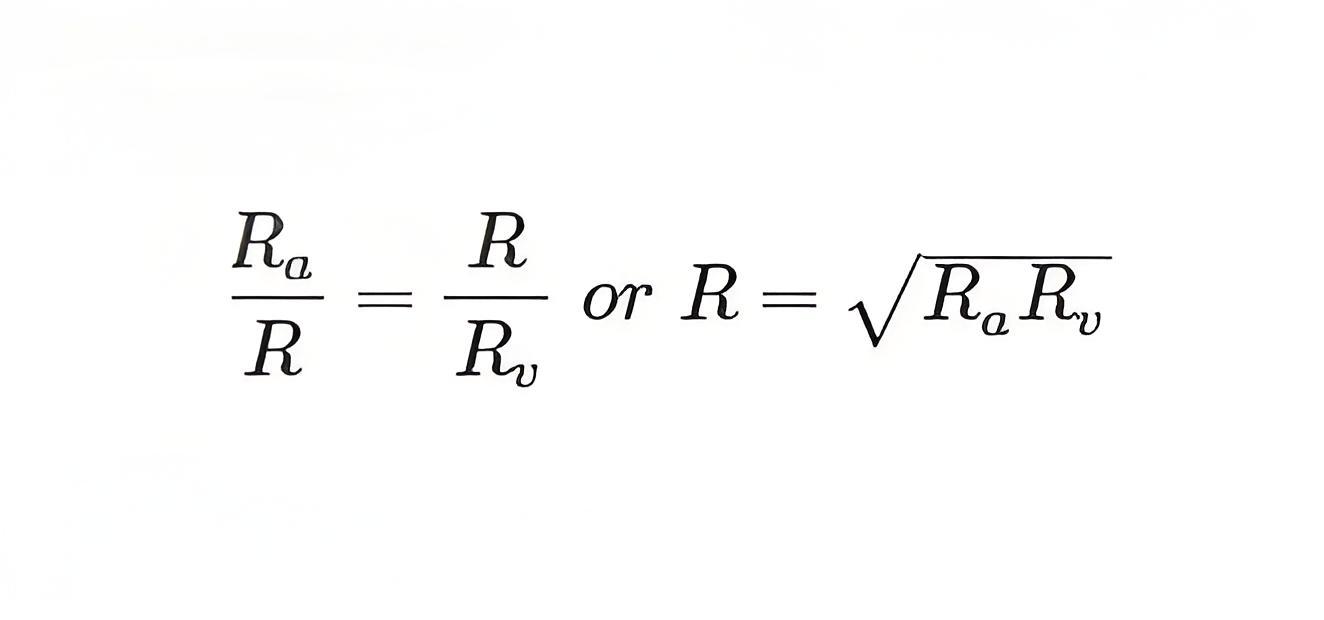
Wheatstone Bridge Method
This is the simplest and the most basic bridge circuit used in measurement studies. It mainly consists of four arms of resistance P, Q; R and S. R is the unknown resistance under experiment, while S is a standard resistance. P and Q are known as the ratio arms. An EMF source is connected between points a and b while a galvanometer is connected between points c and d.
A bridge circuit always works on the principle of null detection, i.e. we vary a parameter until the detector shows zero and then use a mathematical relation to determine the unknown in terms of varying parameter and other constants. Here also the standard resistance, S is varied in order to obtain null deflection in the galvanometer. This null deflection implies no current from point c to d, which implies that potential of point c and d is same. Hence
Combining the above two equations we get the famous equation –
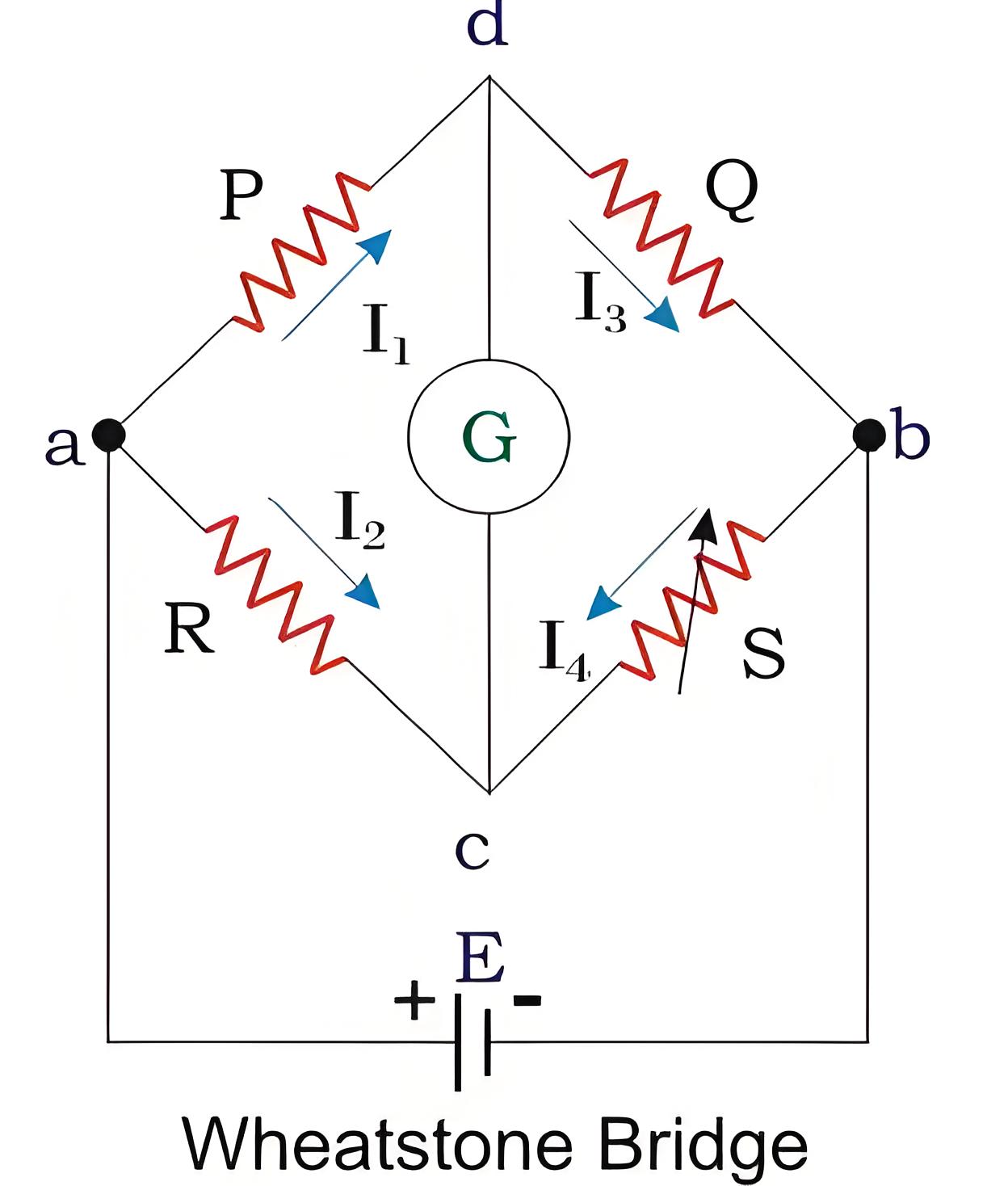
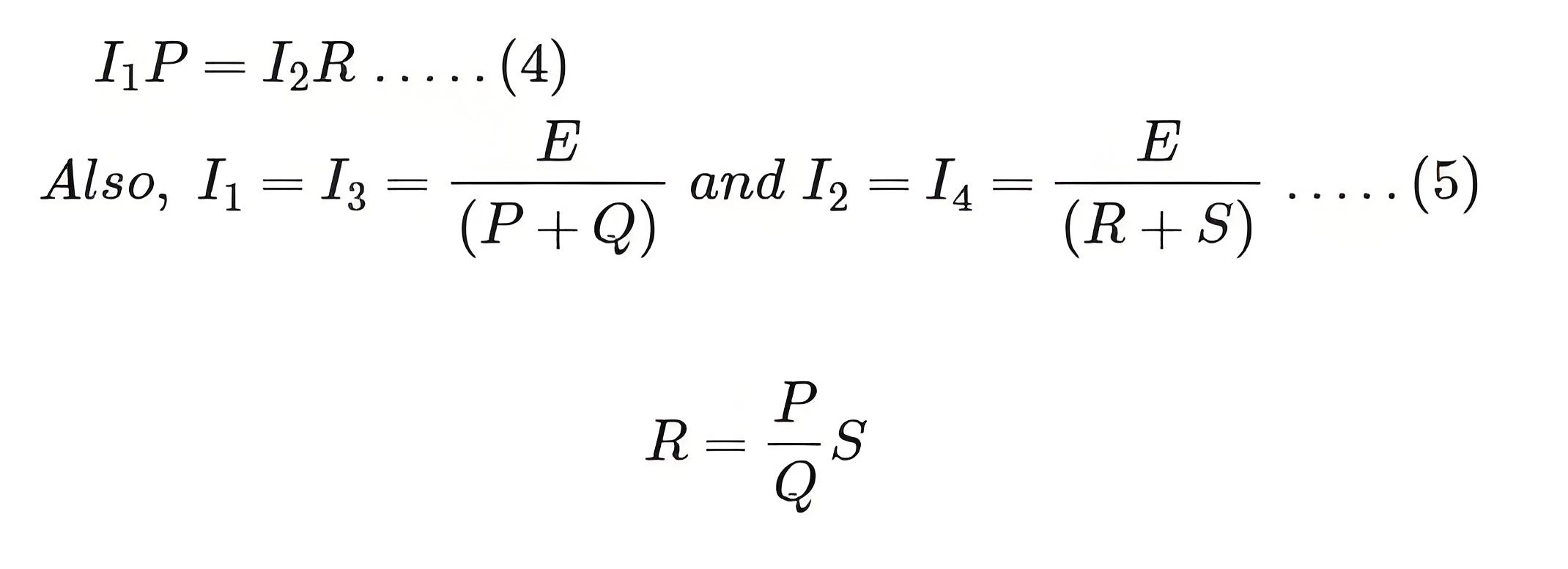
Substitution Method
The figure below shows the circuit diagram for resistance measurement of an unknown resistance R. S is a standard variable resistance and r is a regulating resistance.
First the switch is place at position 1 and the ammeter is made to read a certain amount of current by varying r. The value of ammeter reading is noted. Now the switch is moved to position 2 and S is varied in order to achieve the same ammeter reading as it read in the initial case. The value of S for which ammeter reads same as in position 1, is the value of unknown resistance R, provided the EMF source has constant value throughout the experiment.

Measurement of High Resistance (>100kΩ)
Loss of Charge Method
In this method we utilize the equation of voltage across a discharging capacitor to find the value of unknown resistance R. Figure below shows the circuit diagram and the equations involved are-
However the above case assumes no leakage resistance of the capacitor. Hence to account for it we use the circuit shown in the figure below. R 1
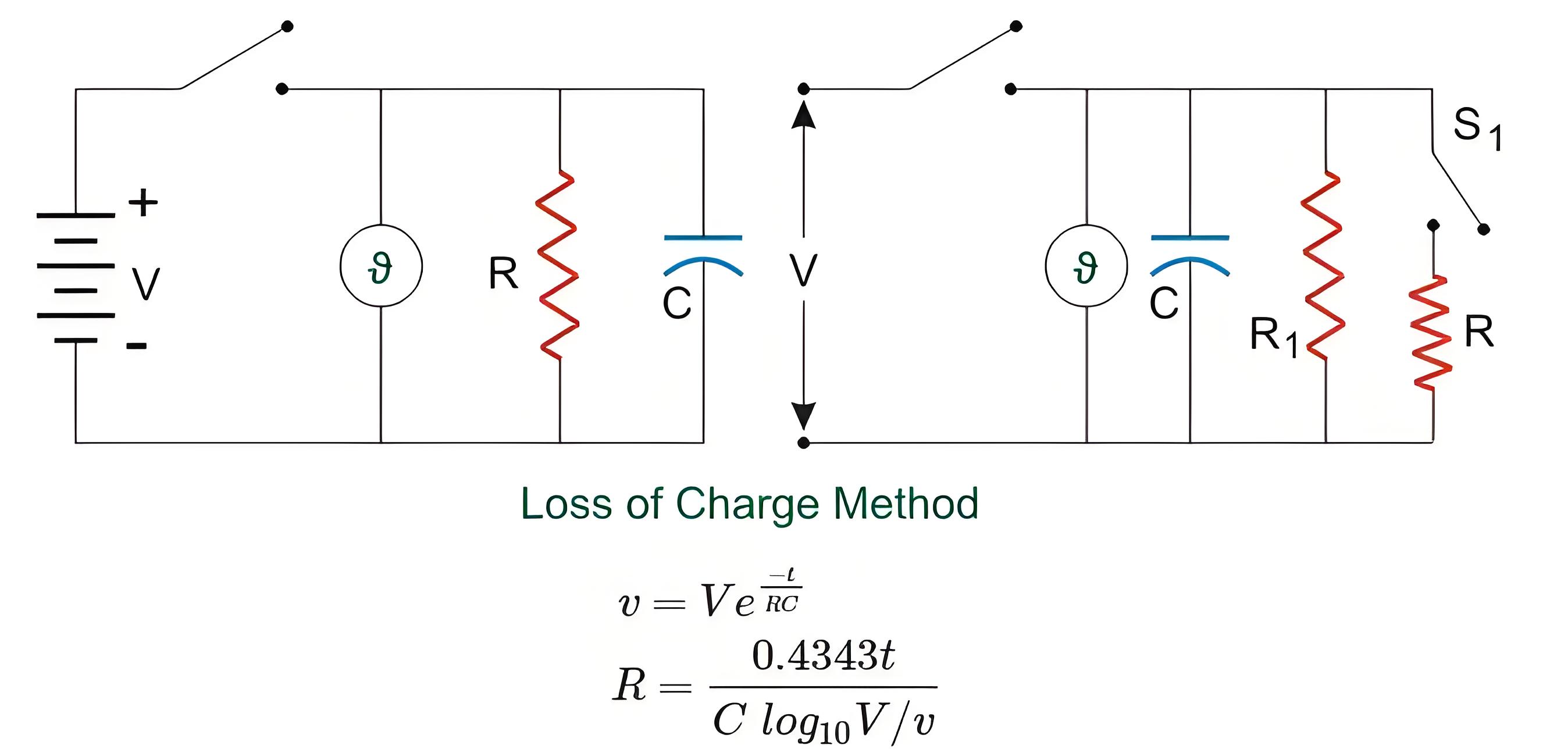
We follow the same procedure but first with switch S1 closed and next with switch S1 open. For the first case we get
For second case with switch open we get
Using R 1 from above equation in equation for R’ we can find R.
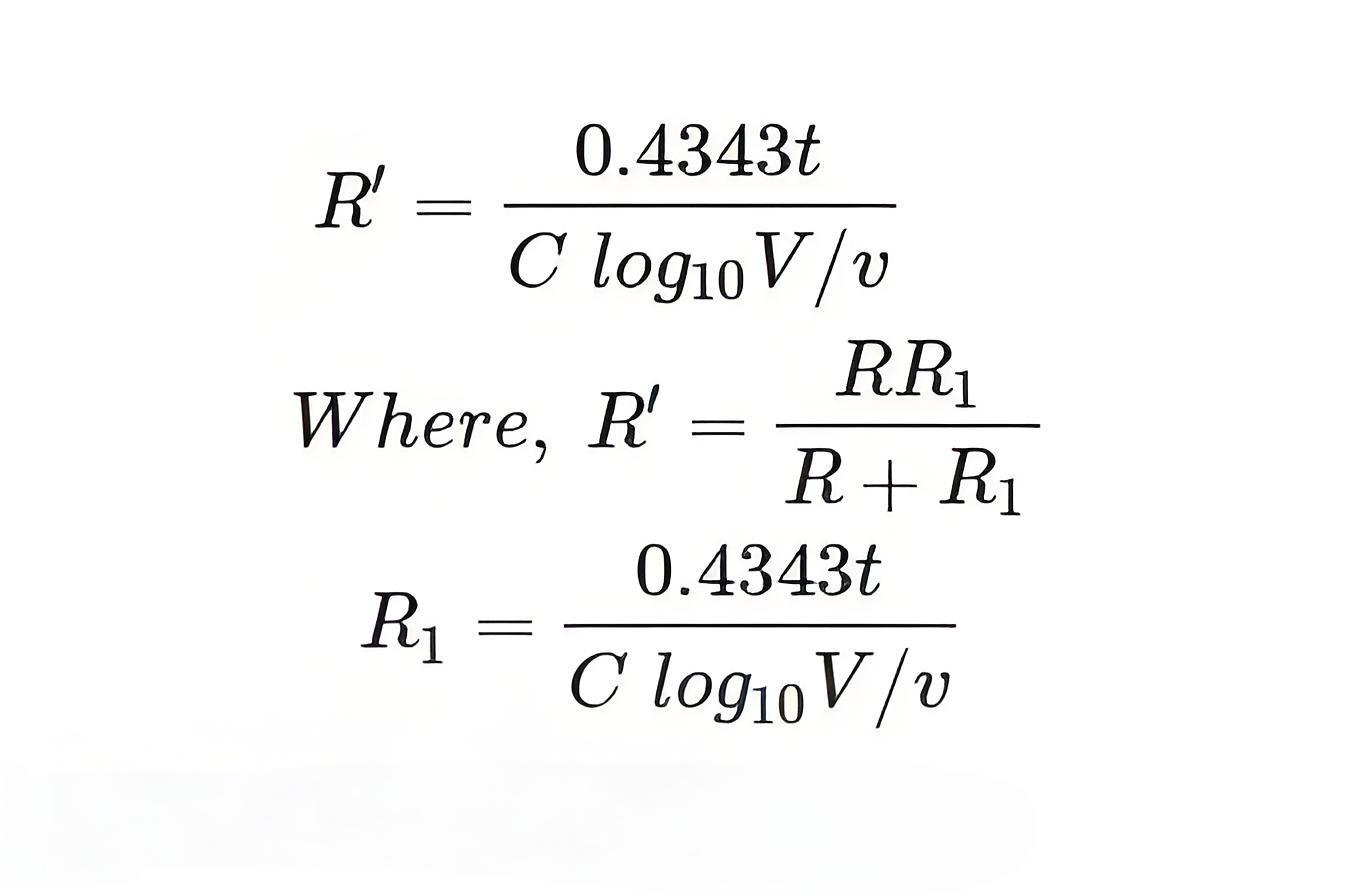
Megohm Bridge Method
In this method we use the famous Wheatstone bridge philosophy but in a slightly modified way. A high resistance is represented as in the figure below.
G is the guard terminal. Now we can also represent the resistor as shown in the adjoining figure, where R AG and RBG are the leakage resistances. The circuit for measurement is shown in the figure below.
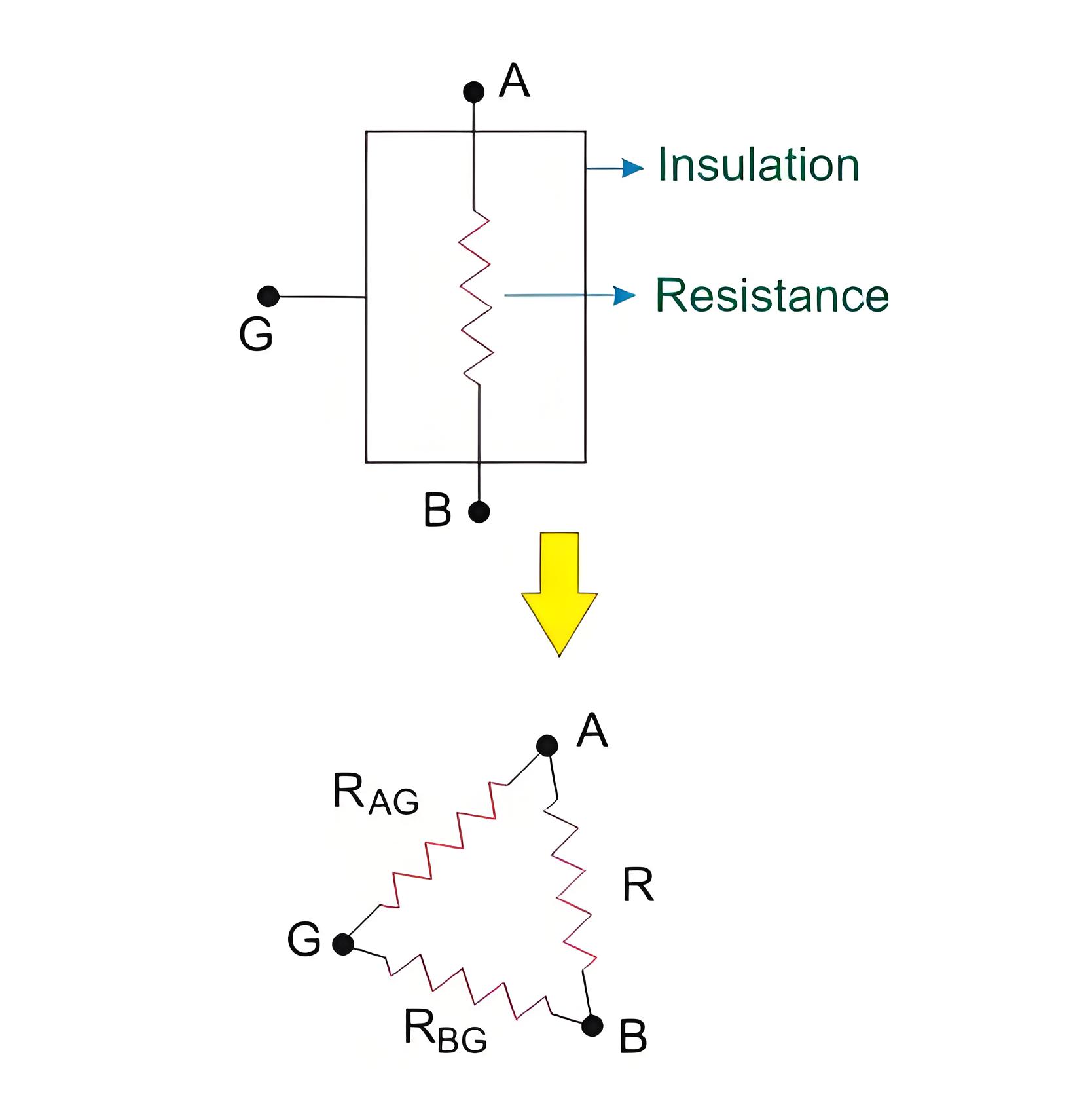
It can be observed that we actually obtain the resistance which is parallel combination of R and R AG. Although this causes very insignificant error.
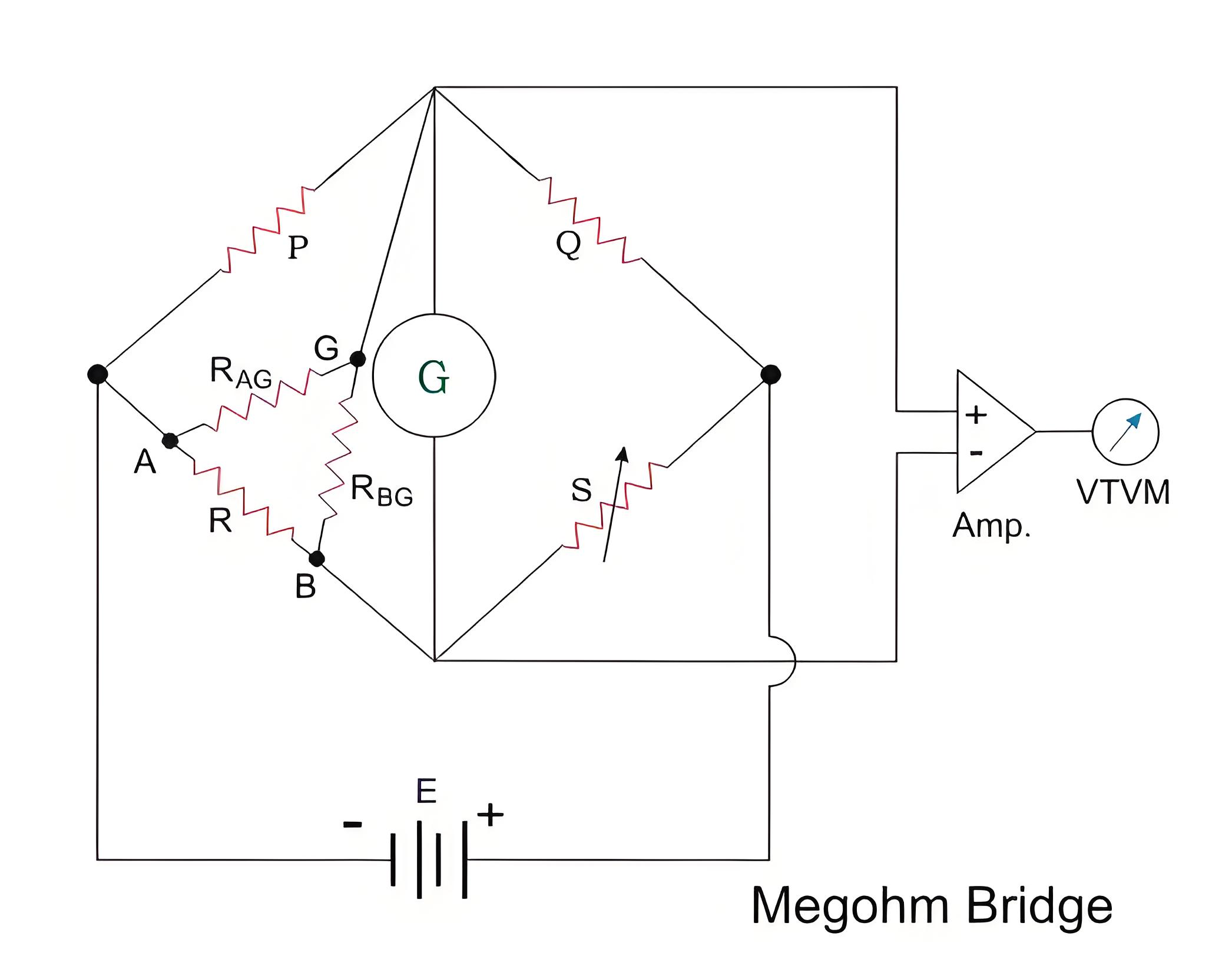
The Electricity Encyclopedia is dedicated to accelerating the dissemination and application of electricity knowledge and adding impetus to the development and innovation of the electricity industry.













